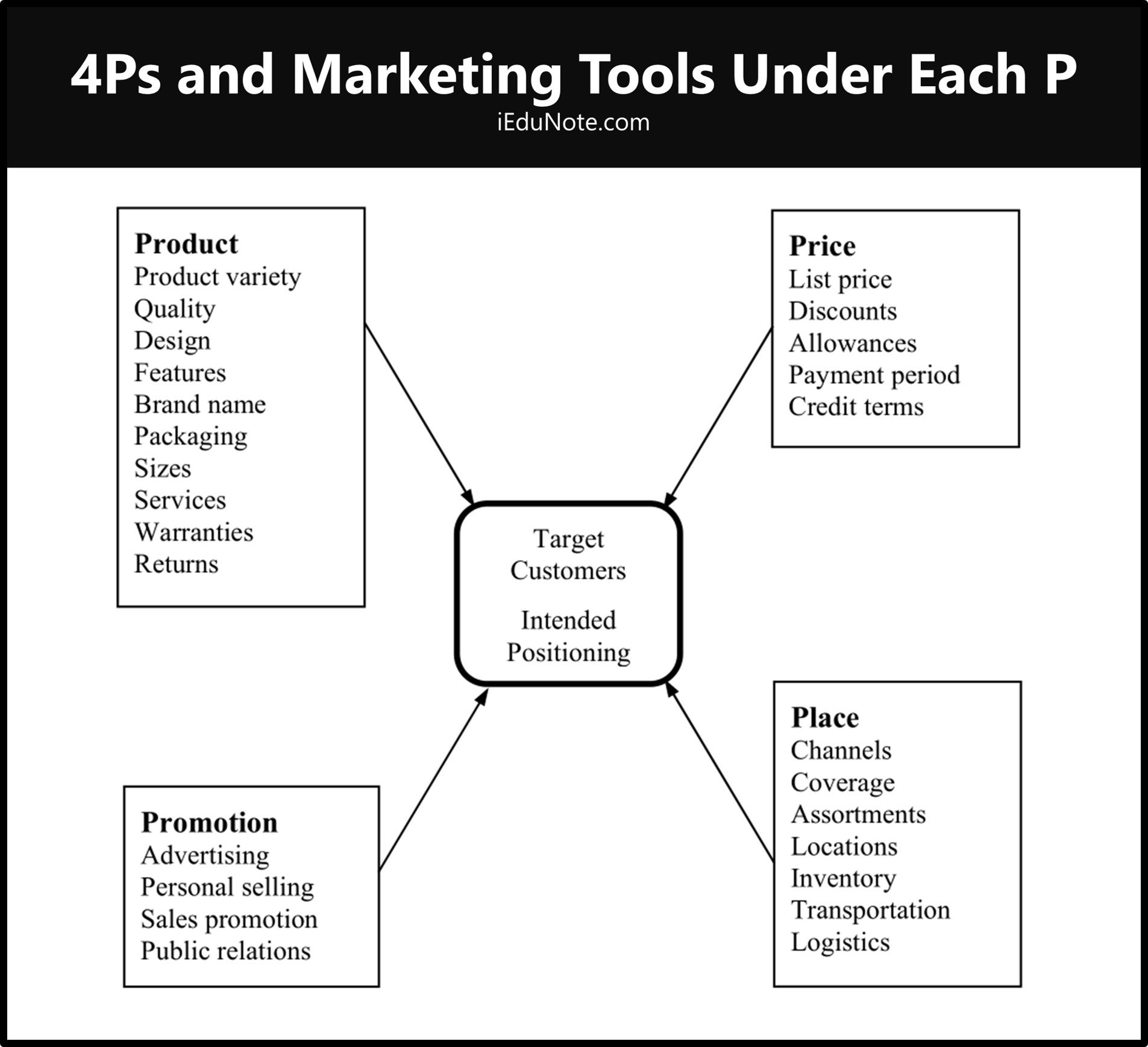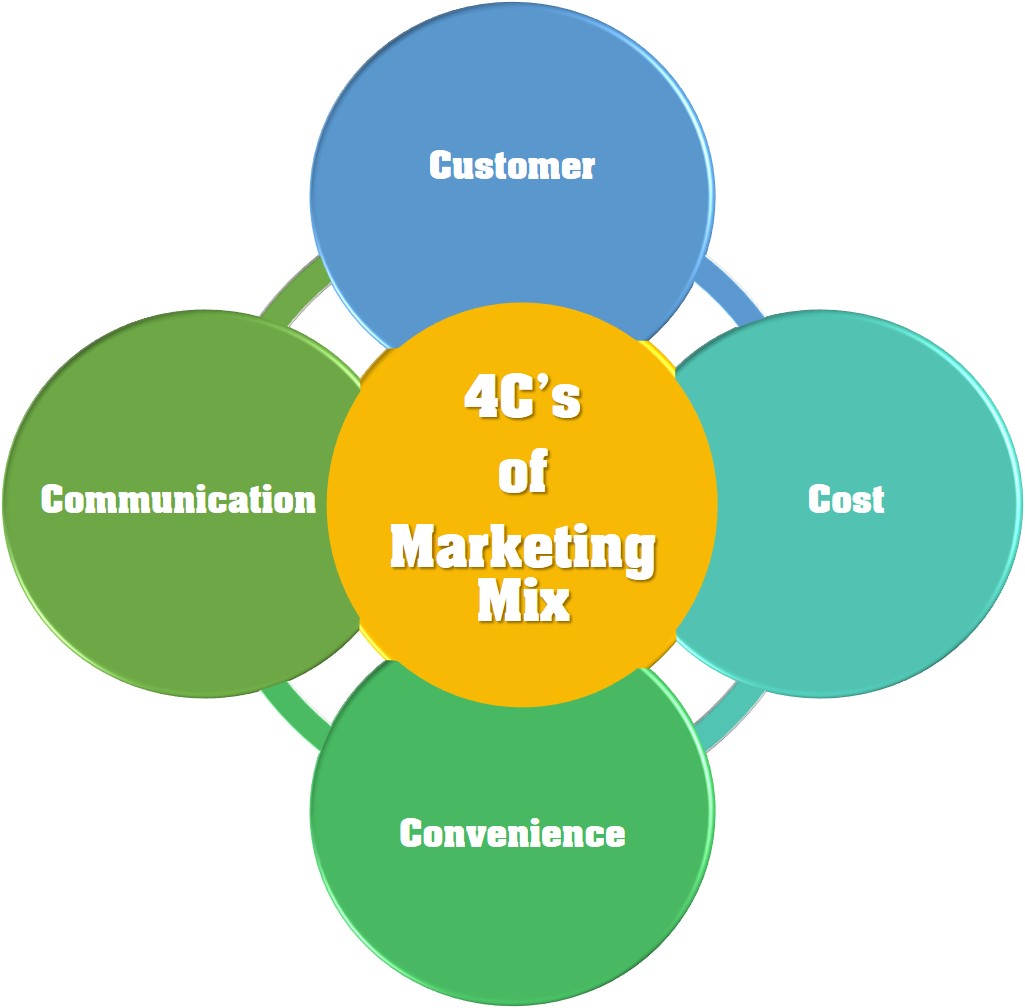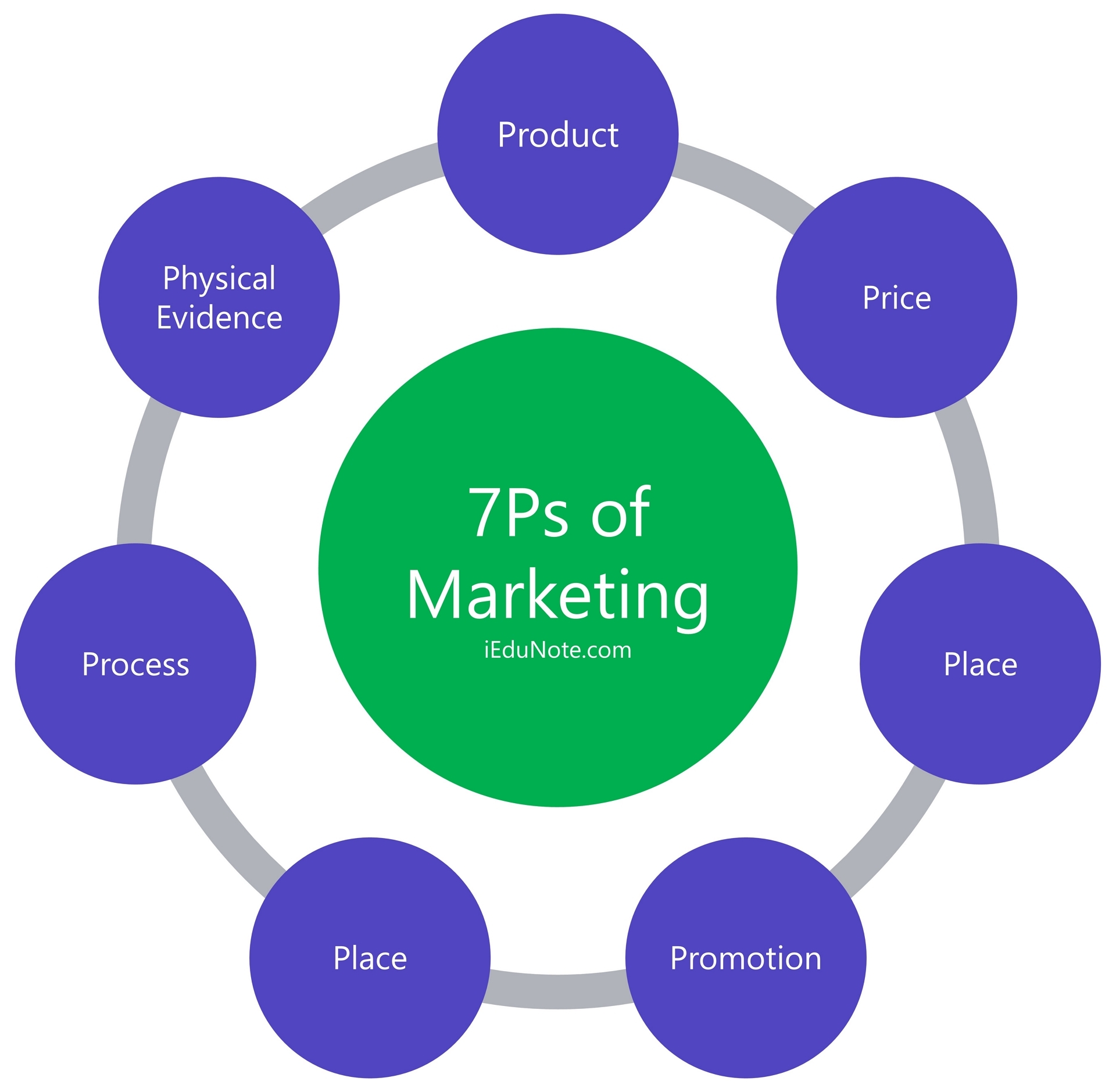The marketing mix is the mixture of controllable marketing variables that the firm uses to influence and pursue the sought level of sales in the target market. It is the tool used to influence or persuade the wants, needs, and demands of the customer for PSI (product, service, or information).
In simple terms, the marketing mix is the tool that is used to influence the target market and its demand for products, services, or information.
So, understanding the basic concept of the marketing mix and its extensions is important for achieving success in marketing.
Elements of Marketing Mix
What makes up the marketing mix?
The marketing mix is a combination of elements that are essential for marketing plan and strategy. As the business space changed, so did the marketing mix.
First, it was the 4Ps of Marketing Mix. Then 7Ps of Marketing Mix. Also, we need to know the 4C’s of Marketing that complements the 4Ps of Marketing Mix.
In this post, we will go through all the elements of the marketing mix and understand how they were developed and how they are implemented in marketing.
4Ps of Marketing Mix

The 4Ps is the best-known way of defining the marketing mix.
4Ps of Marketing Mix was first introduced by E. J. McCarthy in his book, “Basic Marketing – A Managerial Approach” in 1960 by.
4p’s of the marketing mix are;
- Product,
- Price,
- Place,
- Promotion.
Each element has several criteria or decisions.
4C’s of Marketing

4C’s of Marketing fit marketing mix perfectly and complements each other. They explain what should be the main focus in the 4Ps of Marketing Mix.
4C’s of the marketing mix are;
- Customer Value,
- Cost,
- Convenience,
- Communication.
What are the 5 Ps of Marketing?
The 5 P’s of Marketing – Product, Price, Promotion, Place, and People. As the elements of Marketing Mix are debated and developed, marketing gurus and scholars added “people” to the marketing mix.
But now the marketing mix is defined by the 7Ps of Marketing Mix,
7Ps of Marketing Mix

4Ps of the marketing mix is not enough for companies marketing strategies anymore. That is why the 7P’s of marketing were developed.
Businesses were very much product-centric rather than customer-centric. Customer care, providing services were not important. But businesses changed, and competition has increased.
So differentiating from competition and gaining market share became important. 7Ps of Marketing Mix helps companies to develop marketing strategies for the modern competition age.
In 1981 Booms and Pitner extended the 4Ps of Marketing Mix to 7Ps of Marketing Mix. They added Process, People (Participants), and Physical evidence to reflect the new reality in marketing.
Elements of 7p’s of the marketing mix are;
- Product,
- Price,
- Place,
- Promotion,
- People,
- Process, and
- Physical evidence,
Is there an 8th P – the 8th P of the Marketing Mix:
As businesses advance with modern times. Many are considering “Productivity” as the 8th P of Marketing Mix.
One might argue that Productivity is a part of the Process element of the 7p’s of Marketing Mix. But the Productivity P asks how efficiently the market offering is delivering the results to customers. It asks the marketer to consider the efficiency of the marketing process.
Even after 31 years (or 54 in the case of the original P’s), the Marketing Mix is still very much applicable to a marketer’s day to day work. A good marketer will learn to adapt the theory to fit with not only modern times but their business model.
Conclusion
Whether you are using the 4Ps, the 7Ps, or the 4Cs, your marketing mix plan plays a vital role. The Marketing mix is a mixture of controllable marketing variables that firms use to pursue the sought level of sales in the target market.
Even though the original 4Ps of Marketing Mix were developed in the 1960s and the 7Ps of Marketing Mix were developed in the 80s, Marketing Mix is still very much applicable to modern strategic marketing planning.
4Ps, the 7Ps, or the 4Cs, marketing mix is crucial for creating a plan that increases sales and profitability, customer satisfaction, and brand recognition.
The marketing mix combines factors a company can control to influence consumers to purchase its products. The 4Ps comprise a typical marketing mix – Price, Product, Promotion, and Place. The marketing mix represents the interaction of four major variables within the marketing system: Product/service, pricing, distribution, and promotion.
The significance of each of these variables will differ depending on the business types, business mission, nature of the market, and size of the firm, as well as numerous environmental factors.
For example, entrepreneurs in more technical markets find that the distribution channel to the end-user is more direct than those entrepreneurs in the consumer market. In the case of a service, of course, the channel of distribution would be even more direct.
Other firms will find that their goal, or mission, is to “provide the best value for the price,” which may affect all four marketing mix elements, whereas another firm may choose to provide premium quality at a high price. In the latter instance, the firm could focus on a quality product, unique channels, higher prices, and perhaps different promotion alternatives.
